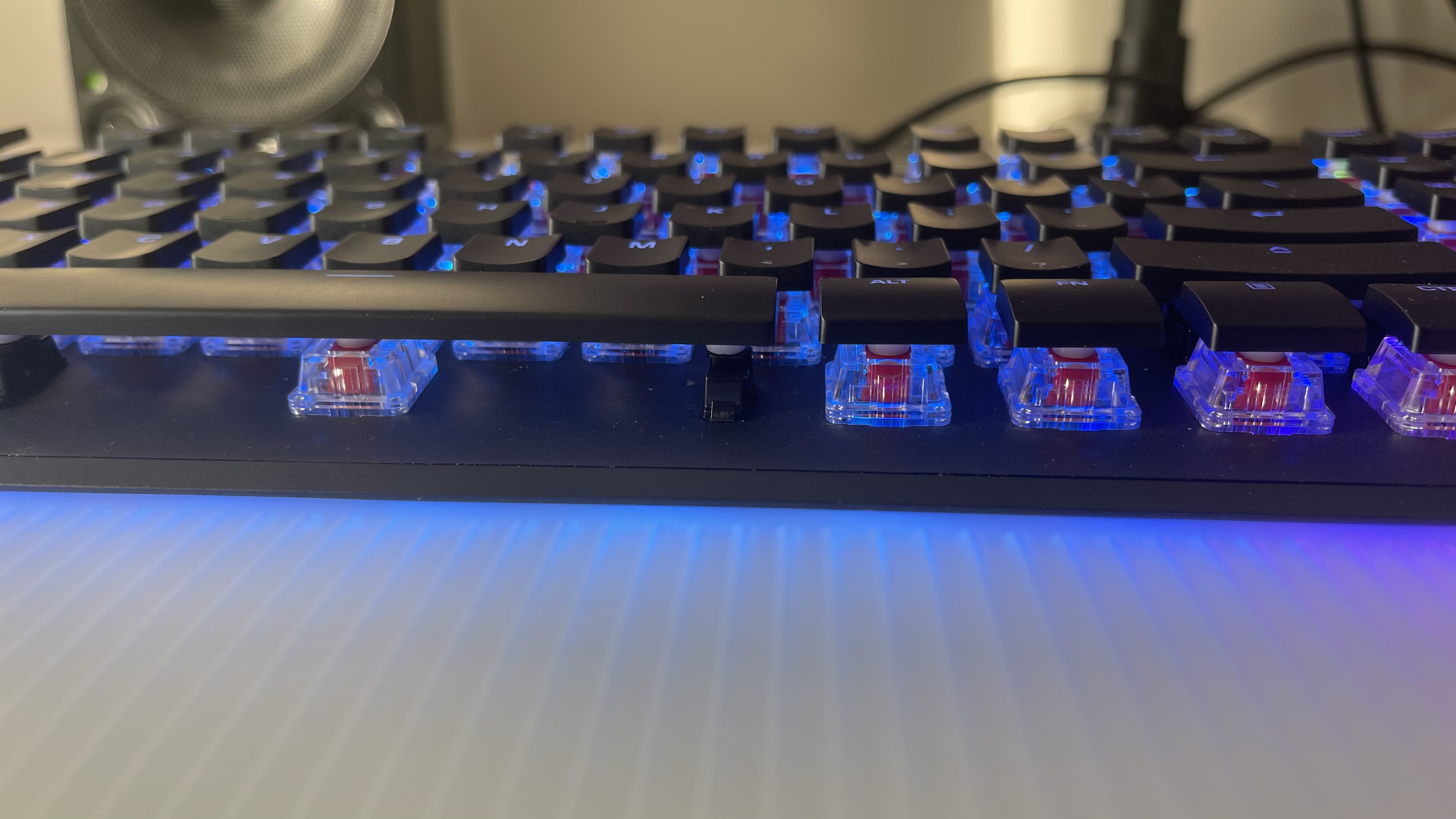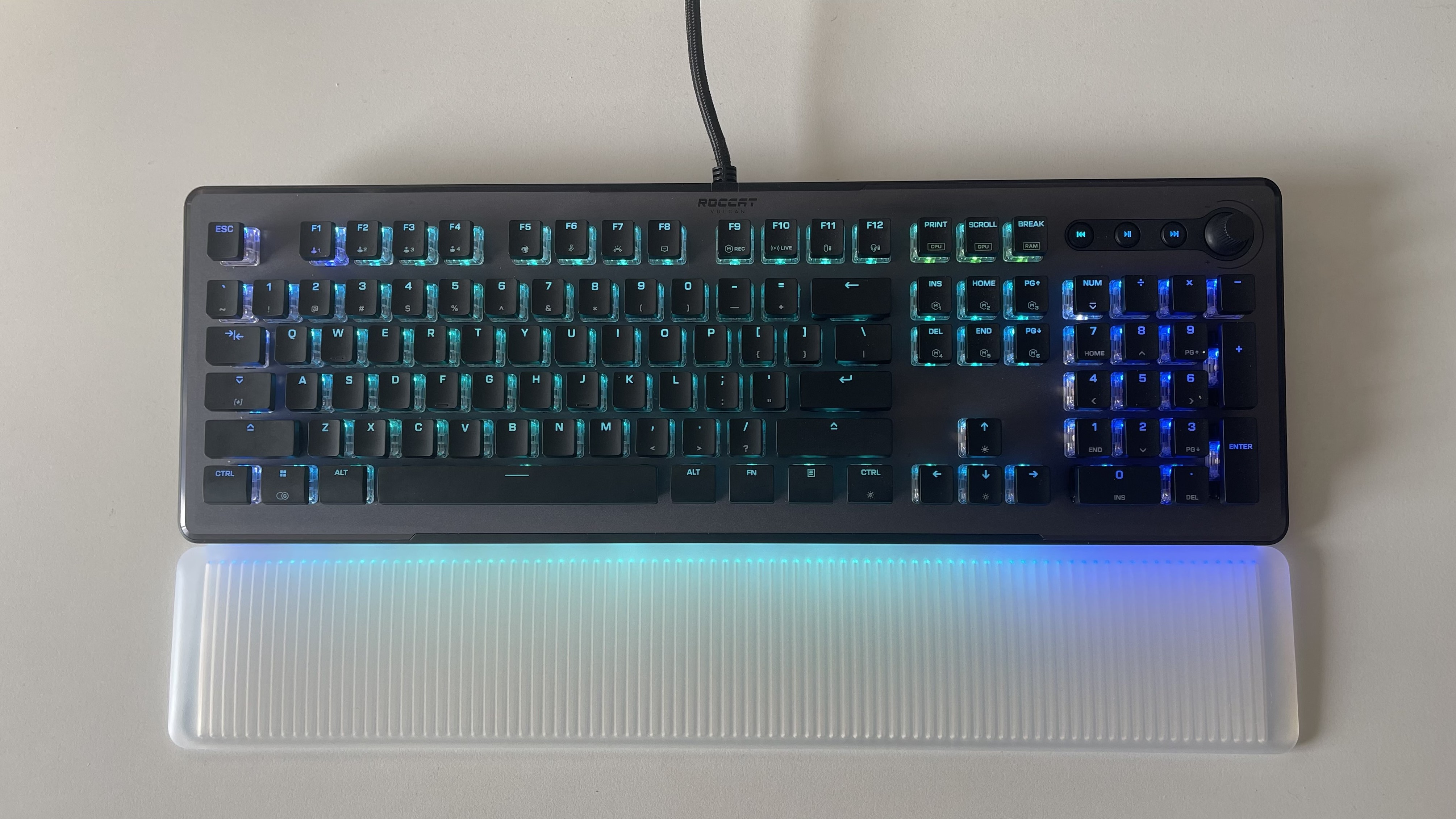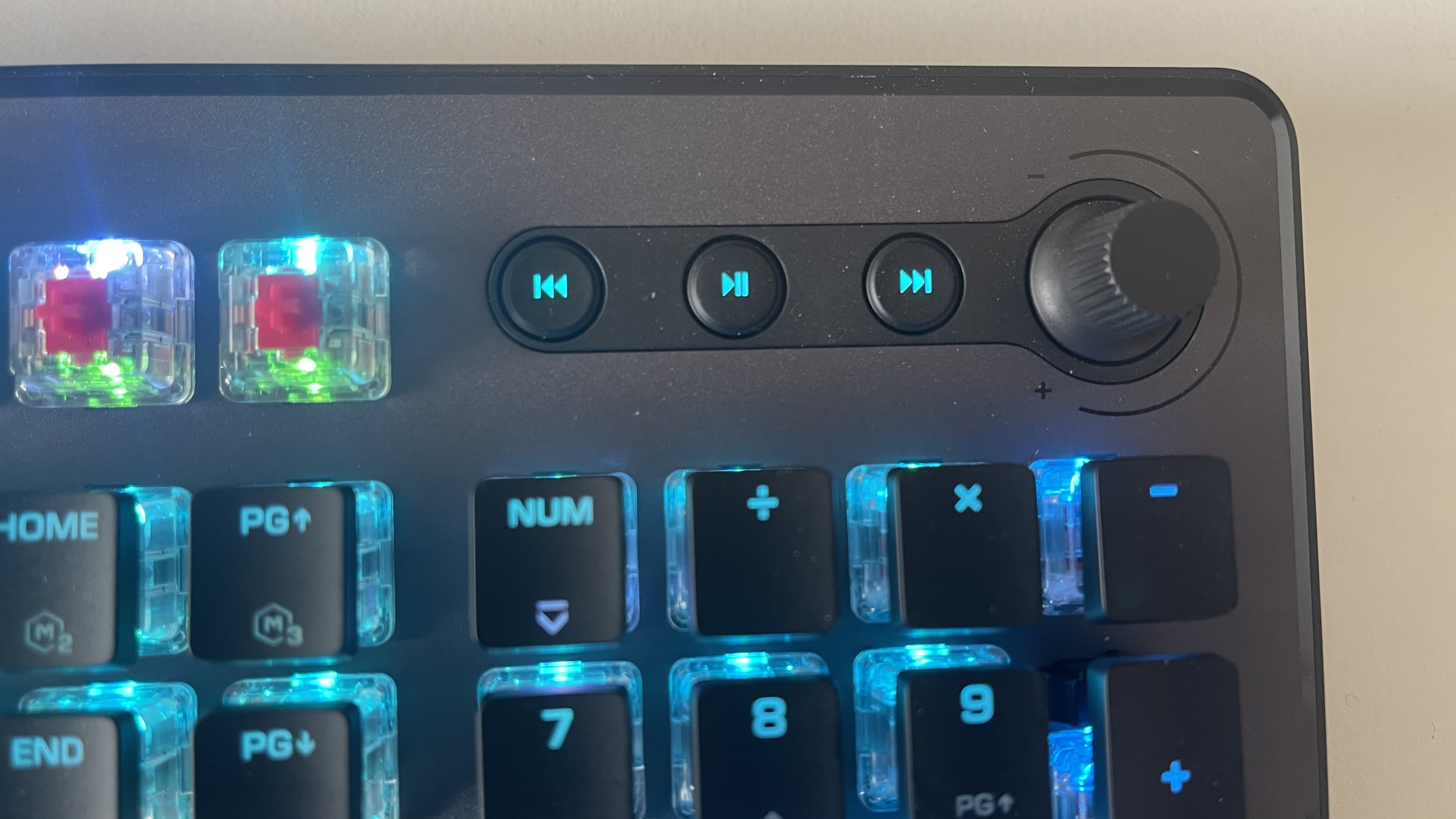GamesRadar+ Verdict
The Roccat Vulcan II Max is an expensive high-end light show with some useful features. It requires a big investment still, but there's enough here to justify the price of admission from solid and robust design to RGB goodness, to good performance.
Pros
- +
Dual-LED design
- +
Great looks
- +
Comfy switches
Cons
- -
No passthrough
Why you can trust GamesRadar+
You’ve got to hand it to the Roccat Vulcan II Max keyboard. It's another example of a sample to come from the German manufacturer that heralds only one thing for certain: the unexpected. Sometimes the brand's gambles pay off, as with its unusually designed Torch mic and mixing station unit, and sometimes the experiments fall wide of the mark. Anyone who witnessed the smartphone-integrated Skeltr keyboards circa 2014 will remember precisely how wide they can fall.
Lately though, we’ve been impressed by the build quality of Roccat gear, and the company’s refusal to simply follow the crowd and iterate on popular designs. You might not love it, but Roccat has a look, and it’s instantly discernible from Corsair’s, Razer’s, or its other rivals.
Enter the Vulcan II Max keyboard. This boasts dual-light LEDs under the keycaps, a striking design that does away with all but the top surface of the keycaps, and an arresting wrist rest that channels LEDs to great effect. It’s also $230/£200. That’s about 20 seconds of having the heating on here in this writer’s native UK, so it’s not to be frittered away. As always then, we’re looking for exactly how much value this high-end contender for best gaming keyboard brings.
Design & features
Roccat has historically run the risk of looking a bit - well, a bit gamer-y. This latest design of Vulcan board, though, doesn’t feature the unnecessarily large bezel around the keycaps, and both construction materials and finish speak to a $230/£200 price point.

How much you like it personally depends on how you feel about being absolutely sand-blasted by high-pressure RGB. This board’s absolutely dripping with the stuff, and that’s largely down to the keycap design. Instead of the usual deep-sided caps, the Vulcan II uses super-sleek top caps and lets the switch and LED remain exposed from the sides. This actually goes deeper than looks and impacts the feel, but we’ll be covering that deeper in the performance section.
If things weren’t flashy enough, the dual-LED design means certain keys can operate as status indicators - mic mute, profile number, and the like. By far the most irritating of these is the software update indicator, which flashes constantly whenever Roccat’s Swarm software releases a new update, or a new firmware version for the board itself. It’s possible to change the colour of this indicator, but we’re still working on a way to disable it completely (*veins in temple protrude visibly*).

There’s full key rollover and 100% anti-ghosting, as you’d expect by now, so if you did want to map 'move forwards' to every single key on the board simultaneously in Warzone 2, fill your boots. A nice notched volume wheel completes the media controls, and the Vulcan II Max is available in two flavours of switch - Roccat’s proprietary Titan brown or red variants, the former a smooth linear switch and the latter a tactile ‘clicky’ switch that registers each press with a switch snap.
Special mention goes to the wrist rest, the likes of which we haven’t seen before. Until it’s attached to the board it looks like a fairly unappealing wedge of transparent rubber, but it aligns with the LEDs across the base to give the impression of a fully RGB rest. Gaudy, certainly, but good fun.
Performance
It took this tester’s fingers a while to acclimatise to the Titan Red switches on this board. There’s something about typing onto caps that don’t have covered sides that just slightly throws you for an hour or two, and we felt like we wanted more angle from the stands at the rear in order to compensate for it. Those stands sit just slightly flat, even at max tilt angle.
However, we did come out the other side of that acclimatisation and started to find those Titan Red switches comfortable and responsive. It’s always worth a reality check when it comes to gaming keyboards - there’s absolutely minimal performance gains to be had here, whatever your skill level. You’re not going to see your K:D skyrocket even if you’re coming to the Vulcan II from a Packard Bell membrane keyboard from 2001.
As such, n-key rollover and anti-ghosting are good for the backs of boxes and not much else. Gaming boards are about comfort, aesthetics, and convenience.

And the Vulcan II is pretty damn good at all three. The flat board layout and wrist rest are sensibly proportioned and other than the slightly flat angle, perfectly comfortable.
And we really like the look here. Turn the lights off and it’s a minimal aesthetic, smooth lines, and very little feature-bloat - the dual-light keys are perhaps the guiltiest culprit there but except for the software update key they’re not intrusive. Roccat’s AIMO RGB implementation is as impressive as ever, making the array of lights behave in a surprisingly tasteful manner for something so inherently garish.
However, we’re baffled by the absence of a USB passthrough connection. The board needs two USB connections to hook up to your gaming PC, but doesn’t offer a mouse port, and if you’re low on available USB space that net loss might be a deal breaker.

Overall - should you buy the Roccat Vulcan II Max?
So, $230/£200 for an attractive and even innovative board. The construction materials and thoughtful design here reassure you that your money’s gone into something carefully built for a gamer’s needs, but there are some obvious downsides. The major one is the absence of a USB passthrough for a gaming mouse, which feels like it should be mandatory at this price - however fancy and energy-hungry the lighting effects are.
How we tested the Roccat Vulcan II Max
As much as we still love Typing of The Dead, testing a gaming board comes down to more than words per minute. We play our usual roster of solo and competitive games with each new review sample to discern any registering, rollover, or precision issues.
We spend plenty of time in GDocs too - pressing WSAD over and over can only get you so far. If you really want to know about the ergonomics of a board, you need to use the whole alphabet.
We used Roccat’s Swarm software to test out the Vulcan II Max’s lighting modes and edit the functionality of its dual-LED keys and saved profiles to be cycled between.
You can read more about how we test gaming keyboards and how we make all our recommendations in the full GamesRadar+ Hardware Policy.
If you want more top-brand keyboard choice then check out the best Razer keyboards, as well as keeping your options open with the best wireless keyboards, the best membrane keyboards going, and the best hot-swappable keyboard you can pick up for some fun too.
Phil Iwaniuk is a multi-faceted journalist, video producer, presenter, and reviewer. Specialising in PC hardware and gaming, he's written for publications including PCGamesN, PC Gamer, GamesRadar, The Guardian, Tom's Hardware, TechRadar, Eurogamer, Trusted Reviews, VG247, Yallo, IGN, and Rolling Stone, among others.





